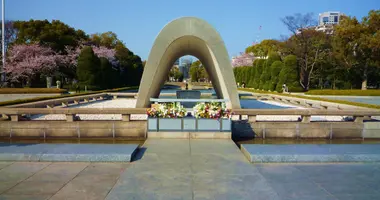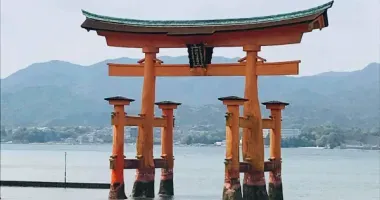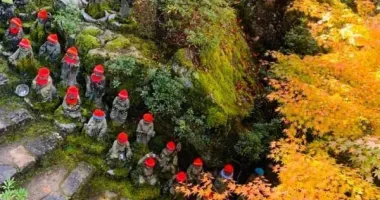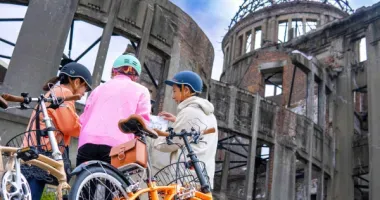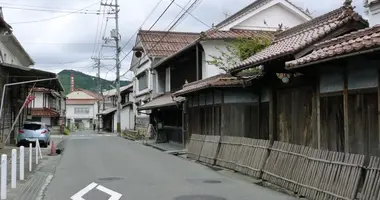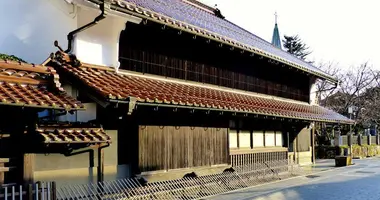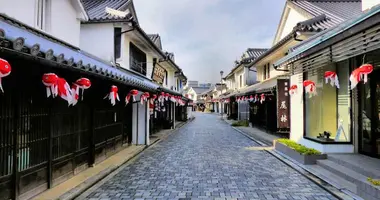Mitarai Guide
Mitarai, Hiroshima Prefecture 御手洗
Jake Davies

One of the streets of traditional Edo Period shops and homes in the old town of Mitarai
Mitarai is a small village built around a harbor on the east coast of Osaki Shimojima Island in the Seto Inland Sea between Honshu and Shikoku.
Due to it's location being literally in the middle of the sea, Mitarai escaped most of the development that came with the twentieth century, especially that of the second half of the century that obliterated so much of traditional Japan.
Mitarai's narrow lanes and alleys are still lined with buildings that date back to an earlier age. Consequently it has been designated a Historic Preservation District of Traditional Architecture, and more recently a Japan Heritage Site.
Shotoen (松濤園) is a collection of historic buildings set in landscaped gardens on the seashore in Sannose, Shimokamagari. Shotoen has a variety of displays connected to the elite maritime travellers of the Seto Inland Sea during the Edo Period.

Wakaebisuya, a traditional high-class brothel of the Edo Period

The noren curtain at the entrance to the former Wakaebisuya brothel featuring a design by the famous 19th century artist Kitagawa Utamaro
History
Through most of Japanese history the Inland Sea (Seto Nakai) has been the main thoroughfare for much of the domestic and international travel and commerce in Japan.
Though the Nakasendo and Tokaido are well known as land routes in Japan, the bulk of travel within Japan was always by water, Japan is after all thousands of islands, and the water was easier and faster to traverse than the steep mountains which make up much of the country.
Ships coming from mainland Asia, Kyushu, western Japan, even the Japan Sea coast, Tohoku and Hokkaido, all would pass through the Inland Sea on their way to the commercial center of Osaka, the Imperial capital of Kyoto, or to Edo (Tokyo).
Mitarai was established because it's harbor was a sheltered place for boats to stop and wait for the change in tides or for favorable winds. However, its growth in the 17th century was due to services offered to the passengers and crews. The most notable of these services was women.
Mitarai was a major "entertainment" site in the Edo Period with literally hundreds and hundreds of girls offering "companionship", in fact Mitarai was home to the biggest brothel in the whole Inland Sea.
With the advent of steamships and diesel engines it was no longer necessary for boats to stop and wait for the tides or wind, but Mitarai's harbor continued to be filled with boats, in fact the town's fortunes did not seriously decline until the passage of the 1956 Anti Prostitution Law which was the death knell for the traditional sex industry in Japan.

The main hall inside Wakaebisuya
Mitarai Tea Houses
Mitarai had three or four large high-class brothels, known euphemistically as tea houses, Wakaebisuya is the only one still standing, and is open to the public. The interior consists of a large hall-like space with a stage and many smaller rooms at the back facing the garden. It is said that 100 girls worked here.
There were many different classes of prostitute in Japan, and those working here were oiran, precursors to the geisha, hence the stage for musical and dance performances. This was for the wealthy and elite travelers, and it is said that the daimyo (feudal lord) of Kumamoto once spent a thousand gold pieces in a single night here.

The entrance to Mitarai Tenmangu Shrine, from where the legend of Mitarai's name comes

A street of storehouses in Mitarai
For the less wealthy and for the sailors there were smaller tea houses with a lower class of prostitute. Along the waterfront a row of three of these tea houses still stand.
One is used as a studio and shop for a Mr. Miyamoto who used to be a boat-builder. Now he makes exquisitely crafted model boats which can be bought or custom ordered.
Ask to see a model of the Ochiro Fune, a kind of boat that was used to ferry prostitutes out to the boats to entertain the sailors who had to stay on board their ships. Kinoe, a port on the neighboring island of Osaki Kamijima was famous for that service.

Former boat-builder turned model-maker, Mr. Miyamoto is a fount of local knowledge
Present Day Mitarai Attractions
Though once obviously bustling, Mitarai is now rather sedate, and is very rarely crowded. This means you can enjoy exploring the back streets and alleys easily imagining you have been transported back in time. Several of the historic buildings are open to the public, including the house where the cartographer Tadataka Ino stayed while he was mapping the Inland Sea.
Though only dating back to the early 20th century, the Otome-za Theater is also worth a visit. Built in 1937, after the war it was used as a cinema before being converted back to a theater. There are no longer performances, but it is a nice example of a traditional Japanese theater.
On the seafront next to the harbor is the Sumiyoshi Shrine, built in 1830 and dedicated to the gods that protect sea journeys. The courtesans of Mitarai supported the shrine financially and also by performing in the festivals associated with it. Much older and tucked away in the back of the village is the Tenmangu Shrine. Legend has it that the mythical Empress Jingu washed here hands in the stream that runs through the shrine, hence the name Mitarai, which means "washing of hands". Just over a hundred years ago the shrine became a Tenmangu Shrine, enshrining Sugawara Michizane, who is also reputed to have washed his hands here on his journey to Kyushu in the 9th century.
As well as the historical architecture the town also has some great views of the surrounding islands. Mitarai is a small place and easy to find your way around, but there is a small tourist information office where you can pick up a guide-map.
Tourist Information Office
Mitarai, Yutakamachi, Kure-shi, Hiroshima 734-0302
Tel: 0823-67-2278

Interior of the Otome-za traditional theater in Mitarai
Access - Getting To Mitarai
It is now possible to drive to Mitarai from the mainland. The Tobishima Kaido is a cycle route that starts near Kure in Hiroshima Prefecture on the mainland and hops across the chain of islands via seven bridges, however ferry is still convenient. A few ferries a day connect directly with Takehara on the Hiroshima coast, and more go to neighboring Osaki Kamijima Island from where there are several ferries to the mainland.
The small island of Okamura, connected to Mitarai by bridge, has ferries that run across to Omishima Island on the Shimanami Kaido island route and on to Imabari in Shikoku. Details of the ferries can be found here.
Kure Station is on the JR Kure Line. It is between 30 and 40 minutes (depending on the type of train) from Hiroshima Station in Hiroshima.
Accommodation
Mitarai has a number of small traditional inns www.yutaka-kanko.jp/stay
If you wish for us to reserve accommodation for you anywhere in Japan (for a small fee) please contact us.

One of a pair of stone lanterns, more than 6 meters high, that functioned as lighthouses at the entrance to Mitarai harbor
Books on Japan Travel
Mitarai: read a guide to the port town of Mitarai on Island in Hiroshima Prefecture. Mitarai used to be the largest brothel in the Inland Sea during the Edo Period. Women served both the high and the low of the sea passengers who passed through.

